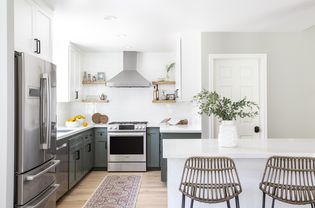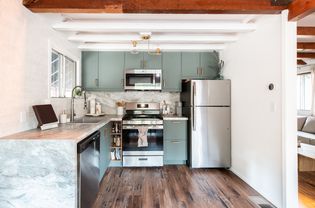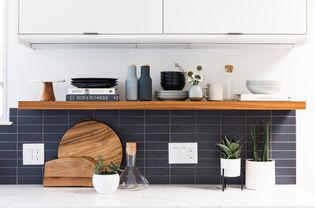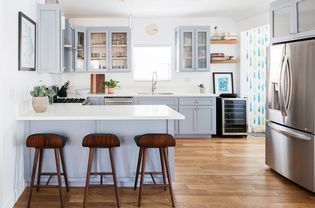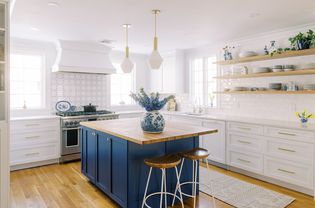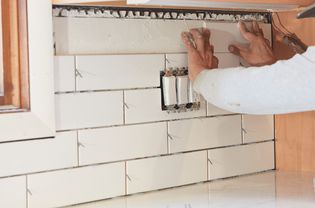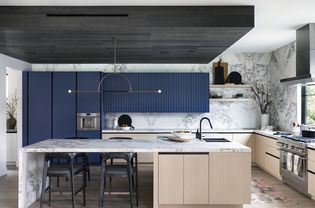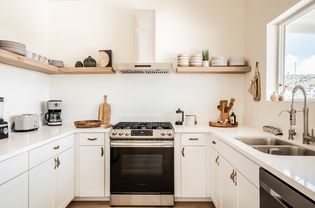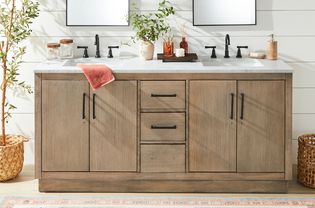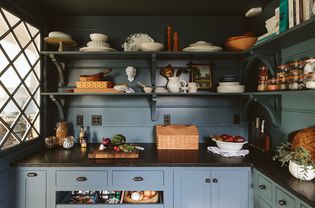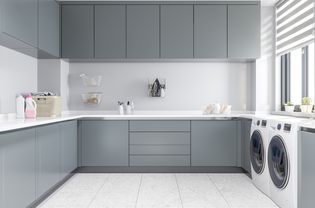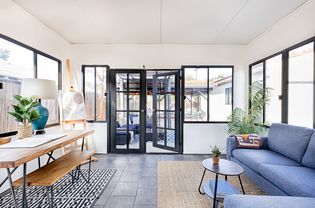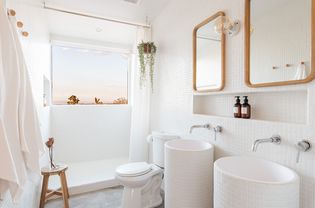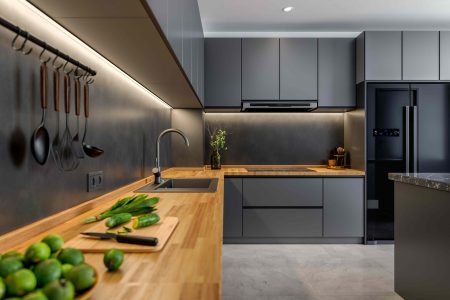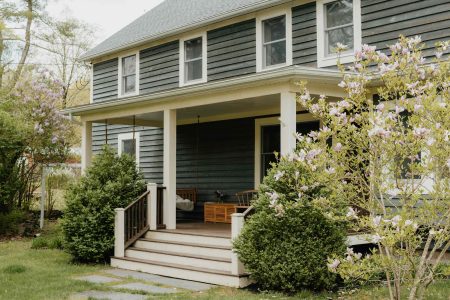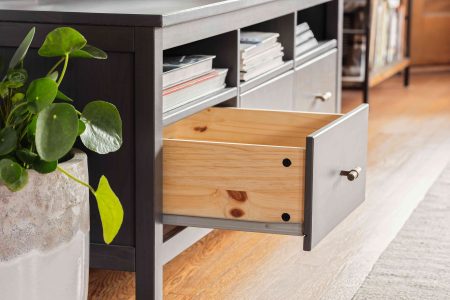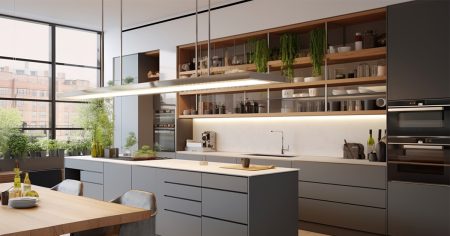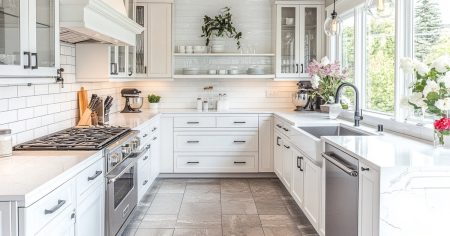Small kitchen remodeling is a game all by itself. With large kitchen spaces, you enjoy certain freedoms that you do not have with smaller spaces—room for more countertop area, appliances, and a kitchen island.
Except for anomalies like a home theater, the kitchen is the most expensive room in the house to remodel, on a square foot by square foot basis. It follows that the less square feet you remodel, the less your overall remodel cost will be.
Also, smaller kitchen spaces are more ergonomically efficient. With a tighter kitchen triangle—your movement area between the stove, sink, and refrigerator—you have less wasted movements.
Find out the best designs and layouts for remodeling your small kitchen and how to make this a space you will love to spend plenty of time in.
Are You Sure You Have a Small Kitchen?
Everyone thinks their kitchen is too small. Generally, the classic 10′ x 10′ kitchen (100 square feet or less) is considered the benchmark of average kitchen sizing.
Definitions vary according to the homeowner’s taste, house, and region, but the National Kitchen and Bathroom Association (NKBA) defines a small kitchen as being smaller than 150 square feet.
Small Kitchen Floor Layouts: Good and Bad
Efficient floor planning is 90 percent of small kitchen design. With so little space available, you cannot afford any inefficient excess. Try these layouts:
| Layout | It Is | Notes |
| One-Wall | One wall of counters, cabinets, and appliances. | The absolute smallest layout possible. |
| Galley or Corridor | Two walls of counters, cabinets, and appliances with a center aisle. | Preferable to the one-wall layout as it allows for “kitchen triangle” movement. |
| L-Shaped | Two lines of counter-topped cabinets arranged at 90 degrees to each other. | This classic kitchen layout is an effective plan for most small kitchens. |
Avoid cramming these layouts into small kitchen spaces:
| Layout | It Is | Notes |
| U-Shaped | Three lines of cabinets, counters, and appliances along three sides of a four-sided room. | The three sides allow for little walking room. |
| L-Shaped with Island | The L-shape as noted above, with an island added. | Adding an island to any small kitchen is difficult due to space constraints. |
| Double-L Shaped Kitchen | A smaller “L” embedded in a larger L-shaped kitchen. | It would be impossible to have this arrangement in any small kitchen. |
Small Kitchen Advantages
When you remodel a low-intensity, low-function room such as a living room, great room, or bedroom, you’re dealing with few services (no running water, few electrical needs, etc.) and inexpensive materials (some drywall, trim, etc.).
By contrast, kitchens, on a square foot basis, are expensive to remodel—garbage disposal, extra lighting, extra electrical needs, plumbing, ventilation, and more. Also, the materials tend to be expensive: granite, stainless steel, Corian, marble, custom or stock cabinets, etc. Less space means less cost.
Taking Control of the Matter
The small kitchen can often represent the “tipping point” in the do-it-yourself vs. hire-a-pro question. Because you’re dealing with smaller spaces, renovating a small kitchen can become manageable.
For example, laying 80 square feet of ceramic tile might be only a weekend project for the small kitchen; laying 375 square feet of tile can be a huge hassle requiring the services of professional tile-setters.
Is the small kitchen remodel the same as a big kitchen remodel—except on a smaller canvas? In some ways, yes. But there are surprising differences that you should be aware of. Take these steps when remodeling your small kitchen:
Find Easy Areas to Scale Down
Big double sinks or farmhouse sinks eat up valuable counter space. Also, think long and hard about whether you really want bigger appliances. Side-by-side fridges are great, but you want to conserve width when it comes to the appliances. Are you a single person or a couple? More economical dishwashers are available, too. If you have any out-of-kitchen area available (e.g., can you put in a pantry around the corner?), use that for items you don’t use frequently, such as canned goods or appliances.
Determine Your Priorities
Along with the above tips, you really need to make hard choices. Or, who knows—sometimes it’s an easy choice. Is storage a number one priority? Then you’ll need to maximize kitchen cabinets at the cost of appliances. Do you really want a breakfast bar? It’s possible, but you may need to sacrifice counter space for cooking to get that breakfast bar.
Use Stock Cabinetry
One of the great things about remodeling small kitchens is that you get to use easy-to-install DIY cabinetry. In fact, you can often find this type of kitchen cabinetry right on the shelf at home improvement stores or places like Ikea. This cabinetry is usually a simple DIY install. If you buy cabinets that are packed flat (like at Ikea), they’re easy to transport, too.
Maximize Cabinet Depth
There is so much space in the backs of cabinets that are rarely used. Maximize your usage by installing lazy susans and roll-out shelves.
Use Large Floor Tiles and Light Colors
It seems counter-intuitive, but larger floor tile makes your small kitchen appear larger. And since the light you get in your kitchen is as much reflected light as it is direct light, you can increase a small kitchen’s light intensity by using brighter-colored wood species for the cabinetry and neutral tones for the counters, as well as for the wall paint.
Read the full article here




